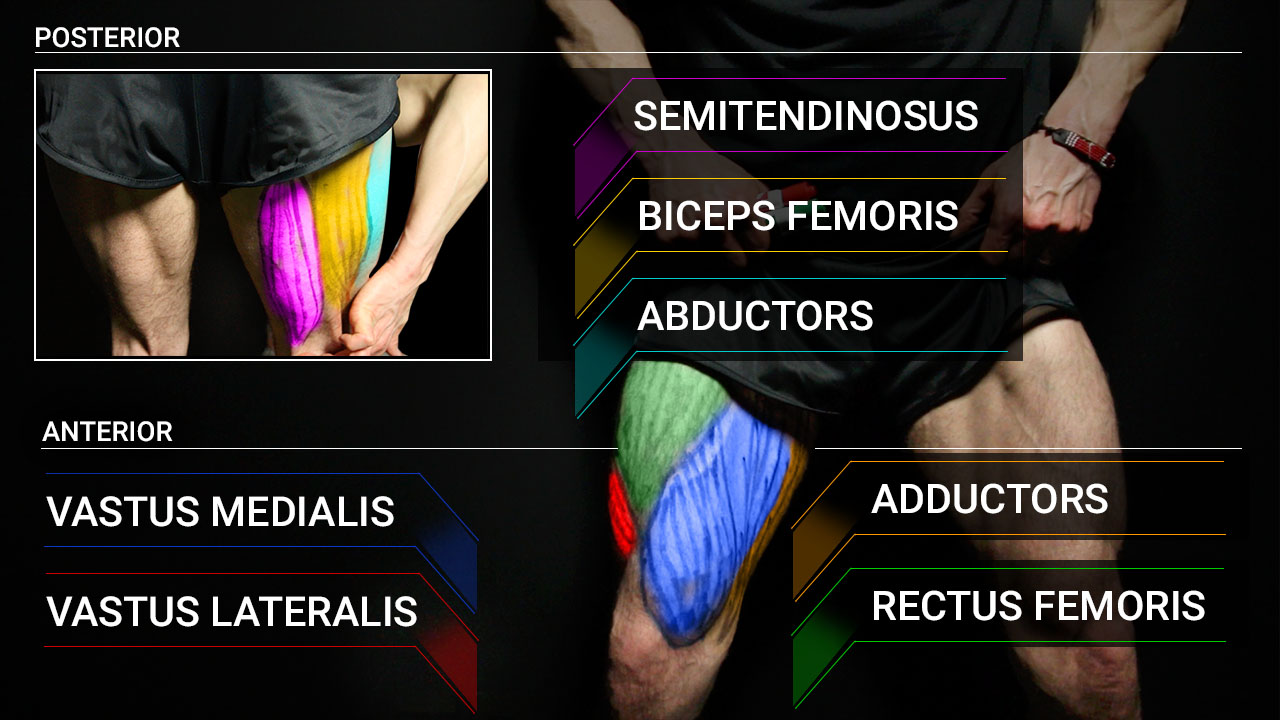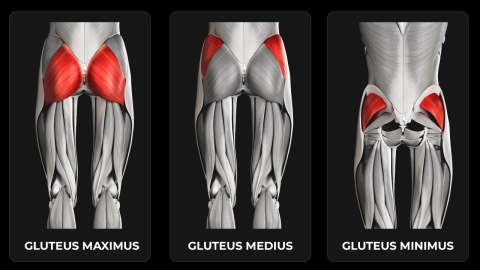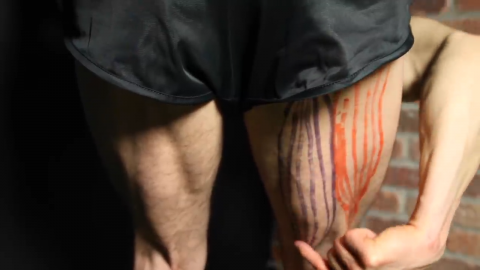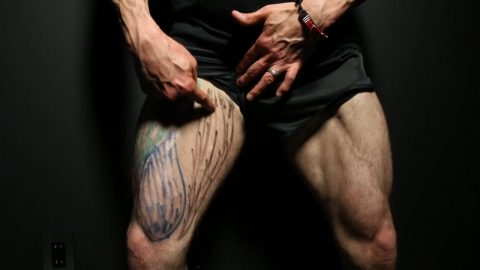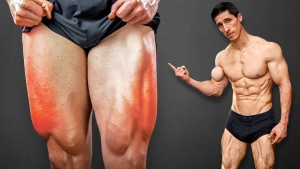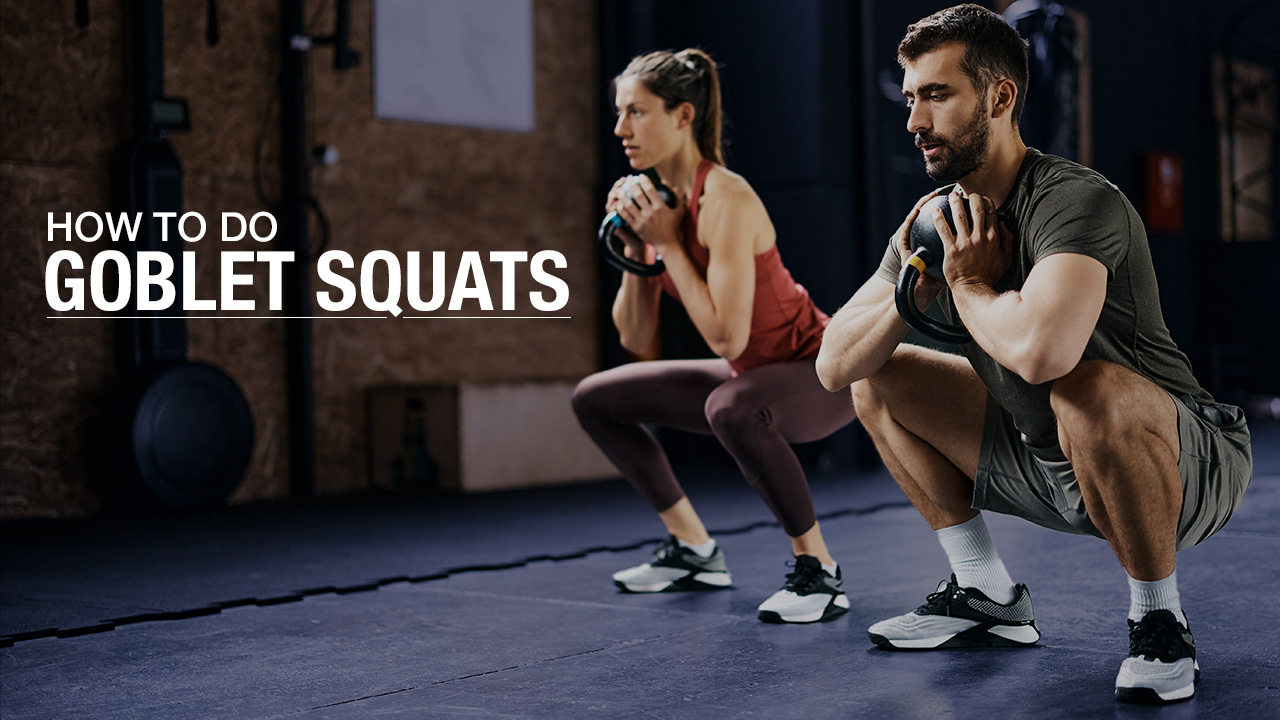
WHY GOBLET SQUATS ARE IMPORTANT
When it comes to building lower body power and strength development, everyone tends to zero in on the big, foundational exercises:
Barbell Squats, Barbell Front Squats, and Deadlifts.
While these exercises are undeniably essential, this focus often leads to the neglect of crucial accessory movements.
Two of the most overlooked muscles in many lower body training programs are the adductors and abductors.
These are the muscles that stabilize your hips and improve overall lower body strength.
Which begs the question:
Which exercise can complement your leg training while improving the extra strength and growth of these often-neglected muscles?
Enter the Goblet Squat.
This one lower body movement not only targets your quads, hamstrings, and glutes but also hits those forgotten stabilizer muscles, ensuring balanced development and preventing injuries.
Let’s dive into how to perform this powerhouse exercise correctly and why it deserves a spot in your exercise routine.
WHAT MUSCLES DOES THE GOBLET SQUAT TARGET?
Understanding the anatomy of the muscles you’re targeting is crucial for maximizing your workouts and building a strong mind-to-muscle connection.
The Goblet Squat is more than just a lower-body exercise.
It’s a comprehensive movement that engages multiple muscle groups to enhance your strength and stability.
By knowing exactly which muscles you’re working, you can focus on proper position form and technique, ensuring each rep counts.
Let’s break down the specific muscles targeted by the Goblet Squat and why this exercise should be a staple in your training program.
QUADRICEPS
The quadriceps are the largest muscle group in the legs, consisting of four distinct sections or heads:
VASTUS MEDIALIS


The Vastus Medialis, located on the inner part of your thigh near the knee, plays a vital role in knee extension.
This muscle ensures stability and strength during squats, helping you achieve a full range of motion.
VASTUS INTERMEDIUS

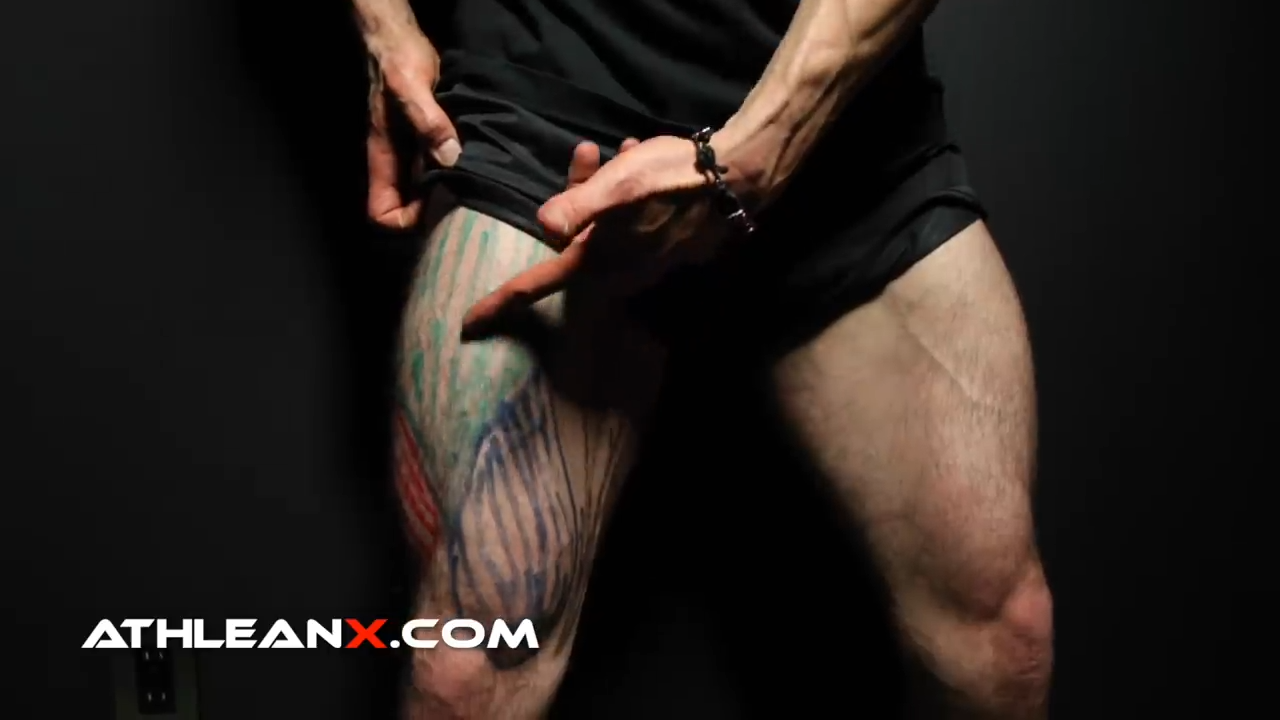
You might not see the Vastus Intermedius, but don’t underestimate its importance.
Nestled beneath the Rectus Femoris, this deep muscle is crucial for knee extension.
It’s right in the middle of your quad, quietly powering your leg movements every time you squat or lunge.
VASTUS LATERALIS

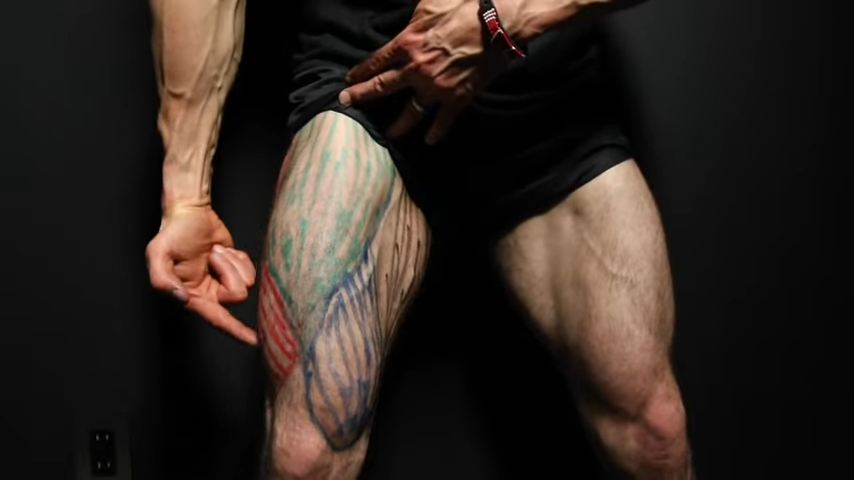
On the outer side of your thigh, you’ll find the Vastus Lateralis.
This lateral component of the quadriceps is not just for show; it plays a significant role in knee extension.
When you’re pushing through those heavy squats, the Vastus Lateralis is working hard to help you lift.
RECTUS FEMORIS

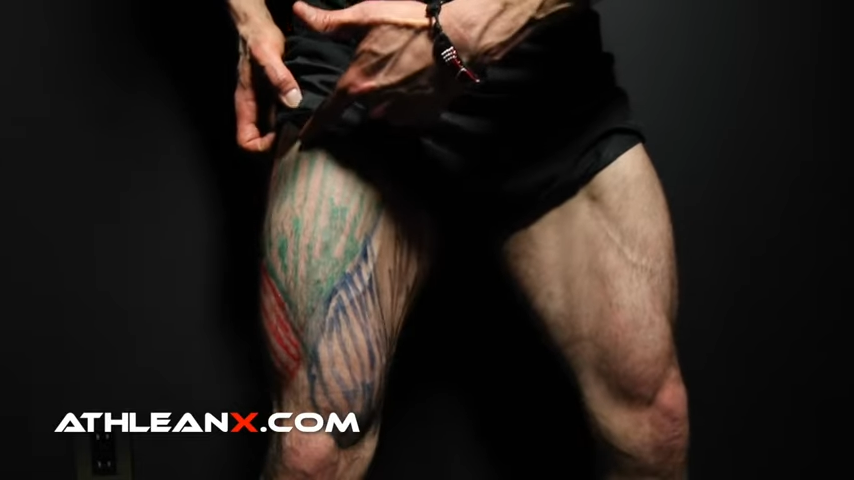
The Rectus Femoris stands out among the quadriceps because it’s the only one that crosses the hip joint.
This unique feature means it not only extends the knee but also helps lift the hip into flexion.
Whether you’re sprinting or performing leg lifts, the Rectus Femoris is doing double duty to keep you moving efficiently.
GLUTES
When it comes to developing your glutes, there are three key muscles to focus on:
GLUTEUS MAXIMUS
The gluteus maximus is the largest and most prominent muscle in your buttocks.
It’s responsible for extending the hip, rotating the leg outward, and moving the thigh away from the body.
This muscle starts from the upper hip bone and the lower spine, attaching to the iliotibial tract and the back of the thigh bone.
It’s important for movements like standing up, climbing stairs, and running, as well as maintaining posture and stabilizing the sacroiliac joint.
GLUTEUS MEDIUS
Situated on the outer surface of the pelvis, the gluteus medius is key for hip abduction and rotation.
It starts from the wide, wing-shaped section of the pelvic bone and inserts into the greater trochanter of the femur.
This muscle is essential for walking, running, and maintaining balance, providing pelvic stability and contributing to overall posture.
GLUTEUS MINIMUS
The smallest of the gluteal muscles, the gluteus minimus, lies beneath the gluteus medius.
It assists with hip abduction and medial rotation.
Starting from the lower portion of the hip bone, it attaches to the front part of the greater trochanter.
This muscle plays a vital role in stabilizing the pelvis, especially when standing on one leg, and supports posture during movement.
HAMSTRINGS
Turning our focus to the back of your legs, the hamstrings are critical for powerful movements and stability.
BICEPS FEMORIS

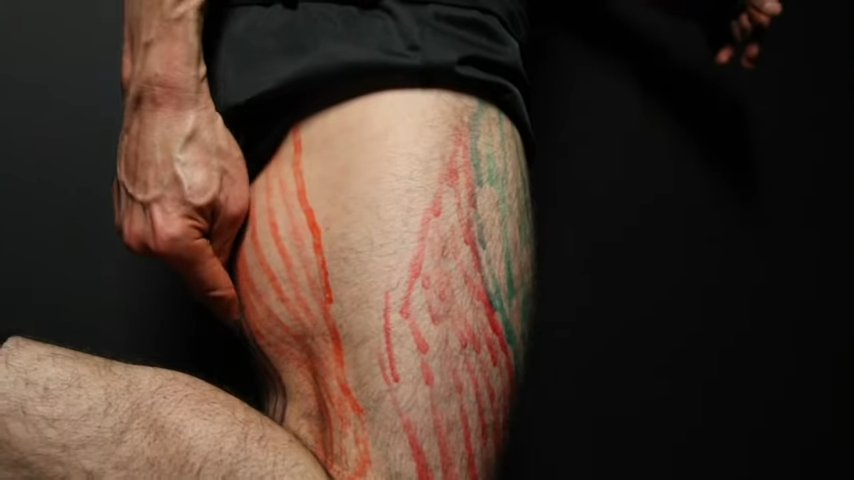
The Semitendinosus, positioned on the inner side of your hamstrings, works in conjunction with the Biceps Femoris to facilitate knee flexion and hip extension, ensuring balanced and effective leg movements.
ADDUCTORS / ABDUCTORS
Often overlooked, the adductors and abductors are crucial for maintaining proper leg function and stability.
ADDUCTORS
The Abductors, situated on the outer thighs, are essential for maintaining balance and stability during dynamic movements.
Strengthening the Abductors is crucial for preventing common issues like knee valgus, where the knees cave inward.
These muscles support outward leg movements and are vital for exercises involving single-leg stability.
BENEFITS OF THE GOBLET SQUAT
The Goblet Squat is a highly effective exercise that enhances both lower and upper body strength while promoting proper form and flexibility.
Unlike traditional squats, this versatile movement reduces the risk of injury and caters to all fitness levels, making it a staple in any leg-specific workout routine.
By incorporating the Goblet Squat, you can improve your hip mobility, core stability, and overall functional strength.
Let’s dive more into the benefits of Goblet Squats:
ENHANCED HIP MOBILITY AND SQUAT DEPTH
The Dumbbell Goblet Squat is particularly effective because it encourages the natural opening of your hips, promoting better squat depth and flexibility.
Unlike traditional back squats that place a heavy load on your spine (spinal erectors), the Goblet Squat reduces the risk of injury by allowing you to maintain proper form without the intimidation of heavier weights.
This makes it an excellent choice for all fitness levels, from beginners to advanced lifters.
IMPROVED CORE STRENGTH AND STABILITY
By holding the dumbbell with hands at chest height in the goblet position, the Goblet Squat engages your core muscles throughout the entire movement.
This helps improve your core strength and stability, ensuring your torso remains upright and your spine in a neutral position.
The added load from the dumbbell also helps build upper back strength and arm strength, turning a lower-body exercise into a full-body movement workout.
CORRECTION OF COMMON MISTAKES
One of the common mistakes in squatting is improper knee alignment, which can lead to knee pain and injury.
The Goblet Squat helps correct this by ensuring your knees track over your toes and do not cave inward.
Using a resistance band around your legs can further enhance this effect by forcing you to push outwards, preventing knee displacement and strengthening your hip abductors.
This setup promotes proper knee alignment and helps address imbalances in your hip muscles.
VERSATILITY AND ADAPTABILITY
The Goblet Squat is a versatile exercise that can be adapted to various fitness levels and goals.
Whether you’re performing bodyweight squats, using a lighter weight, or progressing to heavier loads, this exercise remains effective.
Once you master the Goblet Squat, the technique will transfer over to other kinds of squats like the Sumo Squat, Deep Squat, Front-Loaded Squats, and Box Squat.
FULL-BODY WORKOUT
In addition to targeting the collection of lower body muscles with Goblet Squats, like the quads, hamstrings, and glutes, the Goblet Squat also engages the upper body.
By maintaining a crush grip on the dumbbell, you activate your chest, shoulder blades, and arms, making it a full-body exercise.
This compound exercise is not only great for building strength but also for enhancing your mobility strength program.
FUNCTIONAL MOVEMENTS AND EVERYDAY BENEFITS
The Goblet Squat mimics natural movements and is highly functional, making it a beneficial exercise for daily activities.
It improves your overall body strength, promotes correct form movement patterns, and can be performed without pain.
Incorporating Goblet Squats into your workout routine helps build foundational strength and enhances your ability to perform everyday movements with ease and efficiency.
HOW TO DO THE GOBLET SQUAT
If you’re looking to master an exercise that hits almost every muscle in your lower body while also engaging your core, the Goblet Squat is your go-to move.
Often overshadowed by traditional squats and deadlifts, this powerhouse exercise not only builds strength and stability but also targets those overlooked muscles like the adductors and abductors.
Let’s break down how to perform the Goblet Squat with perfect form so you can maximize your gains and avoid common mistakes.
GOBLET SQUAT

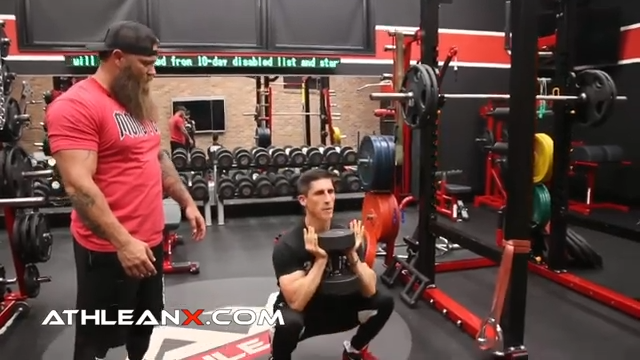
HOW TO DO THE GOBLET SQUAT:
- Hold a dumbbell vertically by one end, cupping your hands around the top part of the weight. This creates an external load that requires constant tension.
- If you’re advanced and don’t have access to a heavy dumbbell, look around the house for a heavy object to use.
- Keep the dumbbell close to your upper chest, in the goblet position.
- Stand with your feet about shoulder-width apart, toes slightly pointed out.
- Ensure the dumbbell is in your center mass. This helps maintain balance and control, a common mistake corrected in the goblet squat.
- Engage your core muscles and maintain a neutral spine and torso upright positioning.
- Initiate the squat by sitting your hips back as if you’re lowering yourself into a chair while simultaneously bending your knees.
- Focus on breaking parallel, ensuring your hips go below your knees to achieve the lowest position.
- Open your hips to make room for your elbows to stay on the inside of your knees. This promotes proper knee alignment and prevents knee displacement.
- Keep your chest tall and your back straight as you descend, ensuring your shoulders stay back and down.
- Go as low as your level of flexibility allows, aiming for a deep squat. This helps to engage glute strength and improve overall squat form.
- Maintain proper form by keeping your knees tracking over your toes, avoiding knee joint stress.
- Push through the balls of your feet and heels to stand back up, maintaining the dumbbell close to your chest.
- Return to the original standing position with controlled movement, ensuring your upper body stays engaged and your torso remains upright.
WHAT MAKES IT EFFECTIVE: The Dumbbell Goblet Squat is effective because it allows you to naturally open your hips, promoting better squat depth and flexibility. Additionally, without a heavy barbell on your back, it reduces the risk of injury and makes it easier to maintain proper form. Once you master the form, consider challenging yourself with the Pause Goblet Squat.
GOBLET SQUAT VARIATIONS
Looking to elevate your leg workouts and hit your muscles from new angles?
Goblet Squat variations are essential for targeting different muscle groups and breaking through training plateaus.
These variations will enhance your power, flexibility, and balance, making your lower body workouts more effective and dynamic.
Let’s explore some powerful Goblet Squat variations that will take your maximal strength and stability to the next level.
BANDED GOBLET SQUAT

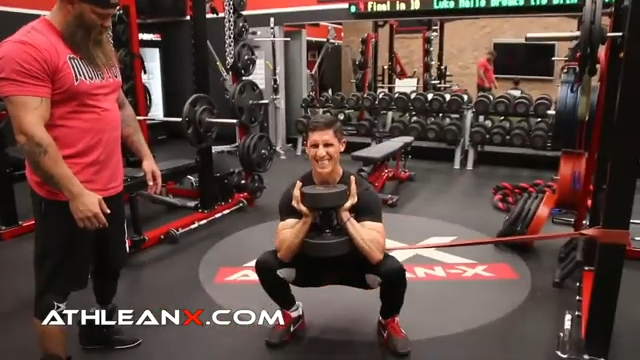
HOW TO DO THE BANDED GOBLET SQUAT:
- Attach a resistance band securely around a squat rack or another sturdy surface. Loop the other end of the band around your outside leg.
- Hold a dumbbell vertically by one end, cupping your hands around the top part of the weight. Keep it close to your chest.
- Stand with your feet shoulder-width apart, toes slightly pointed out, with the band creating resistance by pulling your leg inward.
- Begin the squat by pushing your hips back and bending your knees. Focus on breaking parallel, meaning your hips should go below your knees.
- Open your hips to make room for your elbows to stay on the inside of your knees. This helps maintain a proper squat form.
- Keep your chest up and your back straight as you descend.
- Actively push against the resistance band to prevent your knee from caving inward.
- Push through your heels to stand back up, ensuring you maintain the dumbbell close to your chest throughout the movement.
- Keep your movements controlled and steady, coming straight up out of the squat position.
- Continue to push against the resistance band during the ascent to engage your hip abductors.
- After completing the desired number of reps on one side, switch the band to loop around the other leg.
WHAT MAKES IT EFFECTIVE: The resistance band around your legs forces you to actively push outwards, preventing your knees from caving in and strengthening your hip abductors. This setup corrects imbalances by ensuring that both sides of your body are engaged equally, addressing weaknesses in your hips, and improving overall squat form and stability.
CRUSH GRIP GOBLET SQUAT


HOW TO DO THE CRUSH GRIP GOBLET SQUAT:
- Take a dumbbell and hold it vertically by the top end, pressing your palms together to create a firm crush grip. This grip requires constant tension, engaging your chest, shoulders, and arms, and enhancing grip strength.
- Position the dumbbell close to your chest, maintaining a neutral spine and torso upright.
- Stand with your feet about shoulder-width apart, toes slightly angled outwards.
- Find a comfortable wider stance that allows for a natural squat pattern position, ensuring proper form and reducing the risk of knee injury.
- Initiate the movement by sitting your hips back as if you’re lowering yourself into a chair, while simultaneously bending your knees. This motion mimics traditional squats and promotes glute strength.
- Keep your chest tall and maintain a straight back. Your elbows should stay close to your body, inside your knees, which helps maintain proper knee alignment and prevents common squatting mistakes.
- Descend until your thighs are at least parallel to the ground or lower if your level of flexibility allows. Your body will naturally find the most biomechanically correct position, similar to the form requirements of a deep squat.
- Throughout the movement, maintain the crush grip on the dumbbell. This continuous tension helps engage your upper body muscles, turning a lower-body exercise into a full-body workout.
- Make sure your knees go in line with your toes without caving inward, pushing against the ground for added stability. This squat variation helps improve knee joint stability and thoracic spine integrity.
- Push through your heels to stand back up, maintaining the crush grip and the dumbbell close to your chest.
- Return to the starting position with controlled movement, ensuring your upper body stays engaged. This completes one repetition of the squat motion.
WHAT MAKES IT EFFECTIVE: The Crush Grip Goblet Squat engages both the upper and lower body, enhancing grip strength, chest, shoulders, and arms, while promoting proper squat form and stability through continuous tension and balanced muscle activation. This variation turns a lower-body exercise into a full-body workout, improving overall strength and preventing common squatting mistakes.
BODYWEIGHT GOBLET SQUAT (AIR SQUATS)

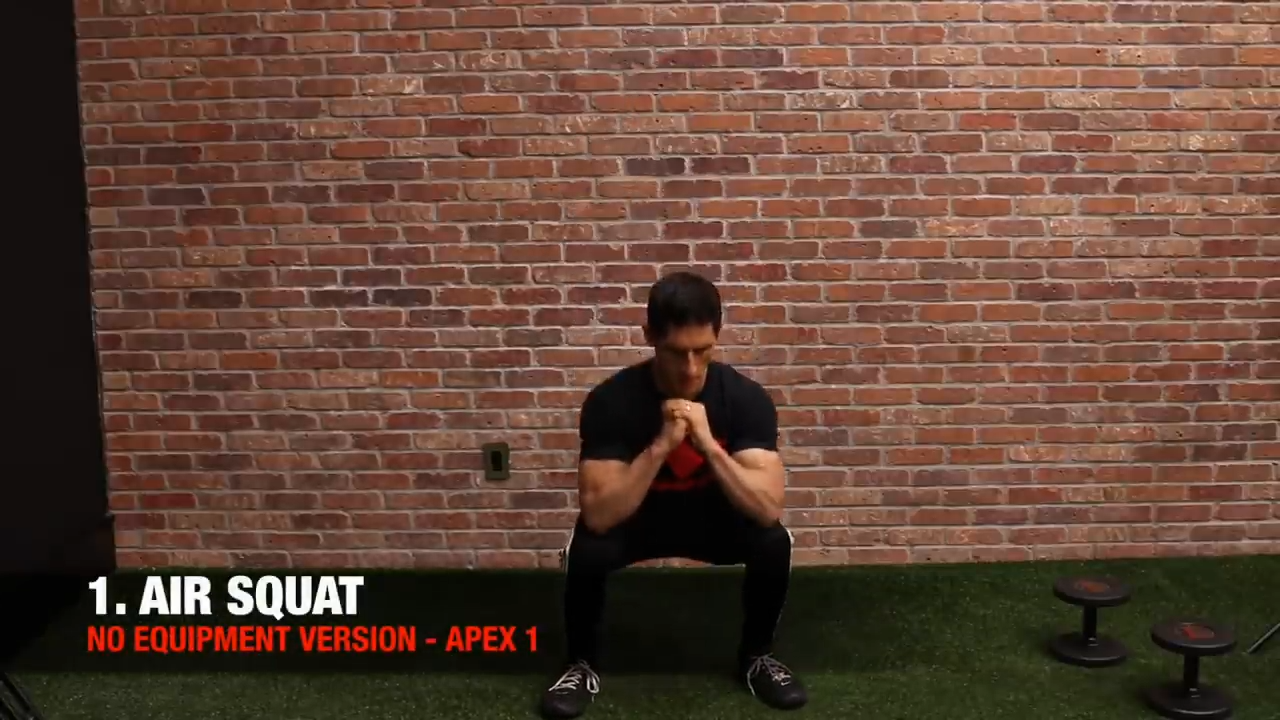
HOW TO DO THE BODYWEIGHT GOBLET SQUAT:
- Stand with your feet shoulder-width apart, toes slightly pointed out.
- Clasp your hands together in front of your chest as if you are holding an invisible dumbbell.
- Keep your hands close to your chest to simulate the same center mass position as if you were holding a dumbbell.
- Engage your core to maintain stability throughout the movement.
- Begin the squat by pushing your hips back and bending your knees. Focus on breaking parallel, meaning your hips should go below your knees.
- Open your hips to make room for your elbows to stay on the inside of your knees. This helps maintain proper squat form.
- Keep your chest up and your back straight as you descend.
- Go as low as your mobility allows, aiming to get as deep as possible while maintaining good form.
- Push through your heels to stand back up, maintaining your hands close to your chest throughout the movement.
- Keep your movements controlled and steady, coming straight up out of the squat position.
WHAT MAKES IT EFFECTIVE: The Bodyweight Goblet Squat (Air Squats) is effective because it promotes proper squat form by encouraging a deep, balanced squat position without the intimidation of added weight. It helps improve hip mobility and strength, teaches you to open your hips properly, and engages the core and lower body muscles, making it an excellent exercise for building foundational strength and flexibility.
GOBLET SQUAT: COMMON MISTAKES
Mastering the Goblet Squat can enhance your overall strength and stability.
But you want to make sure that you’re avoiding some common mistakes that can hinder your progress and increase the risk of injury.
Here’s a breakdown of the most frequent errors and how to fix them, ensuring improvements in form.
IMPROPER KNEE ALIGNMENT
One of the biggest mistakes is allowing your knees to cave inward, also known as knee valgus.
This improper knee alignment can lead to knee pain and injury.
To prevent this, ensure your knees track over your toes and don’t cave inward, pushing against the ground for stability.
NEGLECTING CORE ENGAGEMENT
Failing to engage your core muscles can compromise your squat form.
A weak core leads to a loss of balance and increases the risk of injury.
aintain a neutral spine and torso upright positioning by actively engaging your core throughout the movement.
INCORRECT LOAD PLACEMENT
Holding the dumbbell too far from your chest can throw off your center of mass and affect your balance.
Keep the dumbbell close to your upper chest in the goblet position to maintain proper form and control the external load effectively.
LIMITED RANGE OF MOTION
Not squatting deep enough is a common beginner-level mistake.
To reap the full benefits of the Goblet Squat, aim to break parallel, meaning your hips should go below your knees.
This promotes hip mobility, flexibility, and glute strength.
OVERLOOKING THE FEET AND ANKLES
Limited ankle mobility can hinder your squat depth and stability.
Ensure your feet are about shoulder-width apart, toes slightly pointed out, and focus on maintaining a stable base throughout the squat.
If necessary, perform ankle mobility exercises to improve your squat form.
INCORRECT STANCE WIDTH
Using a stance that is too narrow or too wide can affect your squat mechanics.
Find a comfortable stance that allows for a natural squat position, ensuring proper form and reducing the risk of knee injury.
RUSHING THE MOVEMENT
Performing the squat too quickly can lead to form breakdown and increase the risk of injury.
Keep your movements controlled and steady, focusing on maintaining the correct position and engaging all relevant muscle groups.
IGNORING UPPER BODY ENGAGEMENT
The Goblet Squat is not just a lower-body exercise; it also targets your upper body when performing the Crush Grip Goblet Squat.
Maintain a crush grip on the dumbbell to engage your chest, shoulders, and arms, turning it into a full-body workout and enhancing overall stability.
IMPROPER USE OF BANDS
If you’re incorporating a resistance band, ensure it’s placed correctly around your legs to avoid knee displacement.
The band should create resistance by pulling your legs inward, which you counteract by pushing outwards, strengthening your hip abductors.
LACK OF CONSISTENCY
Inconsistent form can lead to the development of bad habits and increase the risk of injury.
Stick to the foundational principles of the Goblet Squat, maintaining a neutral spine, proper knee alignment, and a stable core throughout the entire movement.
Guys, if you’re only focusing on Barbell Back Squats to develop your legs, you’re missing out on potential gains.
It’s just as important to incorporate the proper accessory movements to ensure you’re activating those all too important (yet often overlooked) stabilizer muscles.
Doing so will help you see huge returns on performance and results.
Not sure what a fully developed lower body program looks like? We can help! Check out our ATHLEAN-X programs to see which is the best fit for your goals and fitness level.

- Focusing on traditional squats and deadlifts often neglects essential stabilizer muscles like the adductors and abductors.
- The Goblet Squat targets these overlooked muscles, along with your quads, hamstrings, and glutes, ensuring balanced development and preventing injuries.
- Here’s how to perform the Goblet Squat:
- Grip a dumbbell vertically by one end, cupping your hands around the top part. Keep it close to your upper chest, in the goblet position.
- Stand with your feet shoulder-width apart, toes slightly pointed out. Ensure the dumbbell is centered to maintain balance and control.
- Maintain a neutral spine and upright torso.
- Sit your hips back as if lowering into a chair, bending your knees. Break parallel, ensuring your hips go below your knees.
- Open your hips, keeping elbows inside your knees for proper knee alignment. Keep your chest tall and back straight, shoulders back and down.
- Go as low as flexibility allows, aiming for a deep squat to engage glutes. Keep knees tracking over toes to avoid stress on the knee joint.
- Push through your feet and heels to stand back up, maintaining dumbbell position. Return to the starting position with controlled movement, keeping upper body engaged and torso upright.
- If you want to try Goblet Squat variations, I’d recommend the Banded Goblet Squat, Crush Grip Goblet Squat, and Bodyweight Goblet Squat.
HOW TO DO GOBLET SQUATS FAQS
The Goblet Squat is an effective exercise that targets both the lower and upper body, enhancing strength and flexibility while promoting proper form.
Unlike traditional squats, it minimizes injury risk and is suitable for all fitness levels.
By encouraging natural hip opening, the Goblet Squat improves squat depth and flexibility without placing a heavy load on the spine.
Holding the dumbbell at chest height engages the core, ensuring stability and an upright torso, while also building upper back and arm strength.
This exercise corrects common squatting mistakes, such as improper knee alignment, by keeping the knees tracking over the toes and preventing inward collapse.
Adding a resistance band can further enhance hip abductor strength and knee stability.
Versatile and adaptable, the Goblet Squat is effective for bodyweight exercises, light weights, moderate weights, and progressing to heavier loads, making it an excellent addition to any workout routine.
Goblet Squats primarily target the muscles of the lower body, including the quadriceps, hamstrings, glutes, adductors, and abductors, making them excellent for building leg strength and size.
Additionally, they engage the core muscles, including the rectus abdominis and obliques, to maintain stability and proper form throughout the movement.
The upper body also gets a workout, as holding the dumbbell in the goblet position activates the muscles of the chest, shoulders, and upper back.
When comparing traditional squats to Goblet Squats, there are some key differences that impact form, muscle engagement, and overall benefits.
Traditional squats typically involve a barbell placed across your upper back, which places a heavier load on your spine and requires significant upper body stability. This can be intimidating for beginners and may increase the risk of injury if not performed with proper form.Goblet Squats, on the other hand, involve holding a dumbbell or kettlebell close to your chest. This front-loaded position helps keep your torso upright and reduces spinal load, making it easier to maintain proper form.
Goblet Squats are particularly effective for targeting the adductors and abductors, the often-neglected muscles that stabilize your hips. They also engage your core, shoulders, and upper back more actively, turning a lower-body exercise into a full-body workout.
Goblet Squats are more accessible for all fitness levels and provide a comprehensive approach to building strength, improving hip mobility, and ensuring balanced muscle development.
Whether you're a beginner or an advanced lifter, incorporating Goblet Squats into your routine can help enhance your overall performance and reduce the risk of injury.
To perform a Goblet Squat, hold a dumbbell vertically by one end, cupping your hands around the top part of the weight to create an external load that requires constant tension. Keep the dumbbell close to your upper chest in the goblet position.
Stand with your feet about shoulder-width apart, toes slightly pointed out. Ensure the dumbbell is centered to maintain balance and control.
Engage your core muscles, keeping a neutral spine and an upright torso.
Initiate the squat by sitting your hips back as if lowering into a chair while simultaneously bending your knees.
Focus on breaking parallel, ensuring your hips go below your knees. Open your hips to allow your elbows to stay inside your knees, promoting proper knee alignment and preventing displacement.
Keep your chest tall and your back straight as you descend, with shoulders back and down. Go as low as your flexibility allows, aiming for a deep squat to engage glute strength and improve overall form.
Maintain proper form by keeping your knees tracking over your toes to avoid joint stress.
Push through the balls of your feet and heels to stand back up, keeping the dumbbell close to your chest.
Return to the starting position with controlled movement, ensuring your upper body stays engaged and your torso remains upright.
REFERENCES

Jeff Cavaliere M.S.P.T, CSCS
Jeff Cavaliere is a Physical Therapist, Strength Coach and creator of the ATHLEAN-X Training Programs and ATHLEAN-Rx Supplements. He has a Masters in Physical Therapy (MSPT) and has worked as Head Physical Therapist for the New York Mets, as well as training many elite professional athletes in Major League Baseball, NFL, MMA and professional wrestling. His programs produce “next level” achievements in muscle size, strength and performance for professional athletes and anyone looking to build a muscular athletic physique.
















